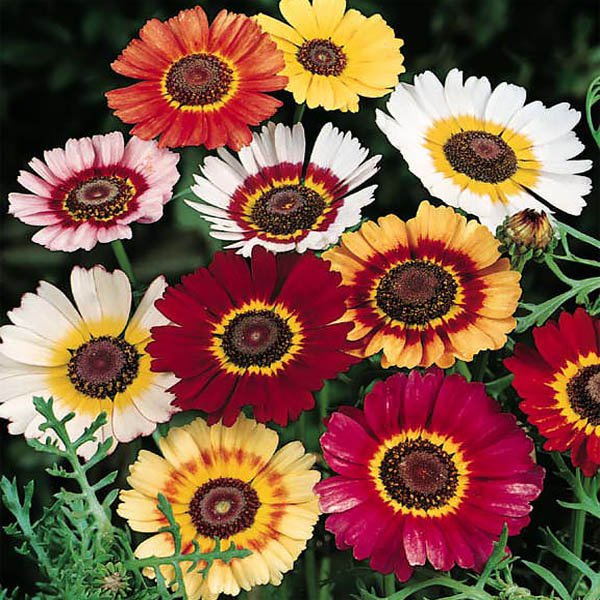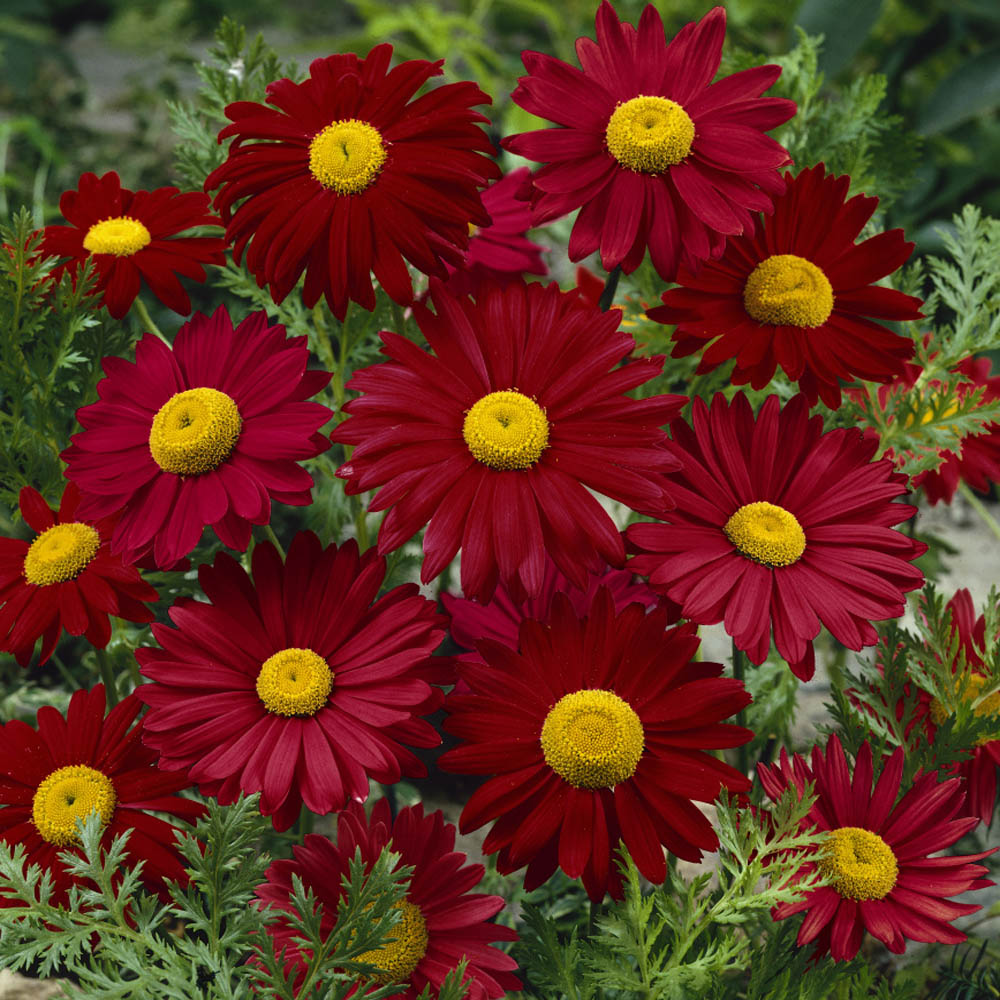
Chrysanthemum Planting and Care Guide
Quick Facts About Chrysanthemum
Under this category there are several daisy-like flowers: Shasta Daisy, Creeping Daisy, Painted Daisy, Ox-eye Daisy, and the herb Feverfew. These are some of most well-known, old-fashioned favorites for the garden. Daisies are great for cutting and have a long life in the vase. They're not picky about soil, they are not demanding, and they give so much beauty and grace to the garden. Butterflies and pollinators love daisies!
Planting Time
Start Daisy seeds indoors 4 - 6 weeks prior to the end of frost season. Or, for warmer climates with an early spring, start the flower seeds directly outside once frost danger has passed.

Planting Location
Daisies perform well in full sun and will tolerate some shade. In hot climates, morning sun and afternoon shade would be preferred. They prefer moist, well-draining soil.
How to Plant Chrysanthemum
- Fill starter trays with moistened soil
- Sow the Daisy seeds on the surface
- The flower seeds need light for germination so press the seeds in and very lightly cover
- Keep the seeds constantly moist and warm
- Loose plastic wrap can be loosely laid on top of the trays to help hold the heat and moisture in
- Lift the plastic wrap each day to mist the soil and seeds
- Once there are seedlings, remove the plasctic completely
- Grow the seedlings in a bright window or under grow lights (14 hours a day)
- Seedlings can be pinched back - no more than an inch at a time - to help promote bushier growth
- As the weather improves outdoors, begin to harden the seedlings off 7 - 10 days
- Transplant out into the garden - spacing depends on the exact species that is being grown
- Or, in early spring weed the garden soil and work it to a dept of 6 - 8 inches
- Add compost to improve the quality of the soil
- Firm the seedbed and scatter the Daisy seeds over the soil
- Lightly rake the seed into the soil, but very lightly
- Keep the soil constantly moist for germination

Care And Maintenance
- For the first several weeks, irrigate regularly for establishment
- A compost mulch are the base of the plants will provide nutrients, weed suppression and water retention
- If no mulch, apply a fertilizer high in potassium and phosphorus a couple of times
- After first blooms are done, cut back stems to encourage a later summer bloom
- Daisies have little problem with pests or disease
- The plants will die back with hard frost in the fall




































